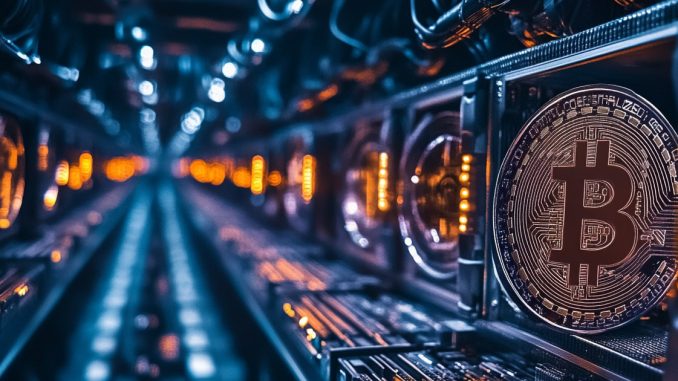
Bitcoin (BTC) miners are increasingly shifting toward artificial intelligence (AI) and high-performance computing (HPC) as transaction fee revenues remain inconsistent, according to a recent VanEck report.
The firm noted that while network congestion can lead to temporary fee spikes, long-term on-chain revenue growth remains uncertain due to the rise of off-chain solutions such as exchange-traded funds (ETFs), futures markets, layer-2 (L2) solutions, and centralized exchanges.
As block rewards halve every four years, Bitcoin miners must adapt since BTC’s price needs to double to maintain revenue levels. This dynamic highlights the importance of pivoting to AI and HPC as diversification strategies.
Pivoting moves
Successful Bitcoin miners are integrating alternative strategies to optimize revenue streams.
Some use mining to subsidize grid expansion in remote energy markets. In contrast, others leverage existing power infrastructure to support AI and HPC workloads, which offer higher margins and unlock new financing avenues.
Innovations in liquid cooling systems, chip design, and co-location technologies further improve operational efficiencies.
The shift toward AI and HPC has gained momentum following CoreWeave’s 700MW AI/HPC agreement in 2024, prompting several Bitcoin miners to explore similar revenue streams.
Bitfarms (BITF) has engaged AI/HPC consultants to assess feasibility across North American sites. At the same time, Bitdeer (BTDR) has cited ongoing discussions with AI/HPC development partners after completing its data center consulting engagement.
Cipher Mining (CIFR) secured a $50 million investment from SoftBank in January to support its HPC data center expansion. Riot Platforms (RIOT) expanded its board of directors to include expertise in AI/HPC investment banking, data centers, and real estate.
Meanwhile, HIVE Digital Technologies (HIVE) appointed Craig Tavares as President and COO of Buzz HPC to lead the firm’s growth in HPC and GPU cloud services.
Iris Energy (IREN) is advancing its AI and HPC initiatives with a 75 megawatts (MW) liquid-cooled AI/HPC data center set to launch in Childress, Texas, by the second half of 2025.
Additionally, the company plans to expand its Sweetwater site with another 600 MW. The expansion will bring the total capacity to 2 GW, making it one of North America’s largest AI/HPC-eligible sites.
The report noted the rarity of such large-scale sites and emphasized their strategic advantage in providing dense compute clusters essential for AI model training and iterative workloads.
Scaling electrical capacity
The pivoting to new business models, such as AI, has added to Bitcoin miners’ necessity to scale electrical capacity.
The report assessed 13 public Bitcoin miners, revealing a collective operational capacity of 7.1 gigawatts (GW). Expansion plans project an increase to 11.7 GW by 2025, 15.9 GW by 2026, and 20.4 GW by 2027, representing a compound annual growth rate of 42% over three years.
An additional 7.3 GW pipeline is planned beyond 2028, though this is considered a conservative estimate given the competitive nature of power procurement in Bitcoin mining.
Scaling these operations will require significant investment. Assuming expansion through 2027 employs a modernized Bitmain Antminer S21 Pros fleet, priced at $5,000 each, alongside $450,000 per MW of supporting infrastructure, the total capital expenditure is estimated at $24.8 billion.
However, Bitcoin miners are unlikely to dedicate all capacity to mining since securing electrical capacity has become a key competency amid growing AI power demands.
Goldman Sachs estimates that AI currently consumes approximately 7.7 GW of global data center power usage, accounting for 14% of the total. The figure is projected to increase to 22.7 GW (27%) by 2027.
Given this trend, Bitcoin miners are expected to allocate 20-30% of their electrical capacity to AI and HPC workloads, reflecting a strategic pivot toward more sustainable and diversified revenue streams.
Mentioned in this article






Be the first to comment